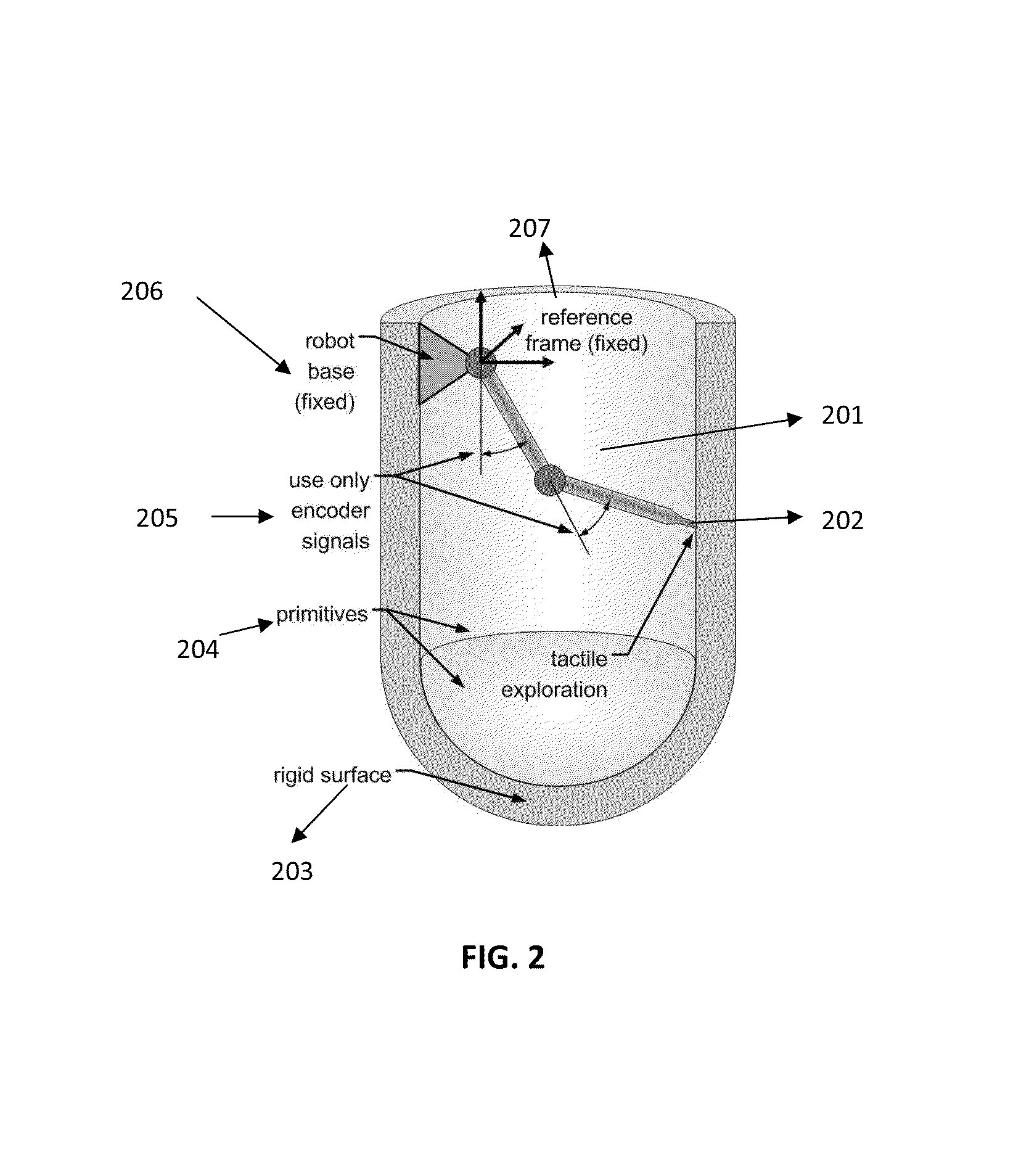Robotic exploration of unknown surfaces
a technology of unknown surfaces and robots, applied in the direction of survey, instrumentation, borehole/well accessories, etc., can solve the problems of high cost of keeping a well out of service, high cost of well mapping, and difficulty in locating wells, so as to minimize the number of data points needed and maximize the amount of information
- Summary
- Abstract
- Description
- Claims
- Application Information
AI Technical Summary
Benefits of technology
Problems solved by technology
Method used
Image
Examples
Embodiment Construction
[0027]The particulars shown herein are by way of example and for purposes of illustrative discussion of the embodiments of the subject matter disclosed only and are presented in the cause of providing what is believed to be the most useful and readily understood description of the principles and conceptual aspects of the subject matter disclosed. In this regard, no attempt is made to show structural details of the subject matter disclosed in more detail than is necessary for the fundamental understanding of the subject matter disclosed, the description taken with the drawings making apparent to those skilled in the art how the several forms of the subject matter disclosed may be embodied in practice. Further, like reference numbers and designations in the various drawings indicate like elements.
[0028]Embodiments of the subject matter disclosed relate to the location and entry of a lateral hydrocarbon well from a main wellbore in a subterranean formation. Embodiments of the subject m...
PUM
 Login to View More
Login to View More Abstract
Description
Claims
Application Information
 Login to View More
Login to View More - R&D
- Intellectual Property
- Life Sciences
- Materials
- Tech Scout
- Unparalleled Data Quality
- Higher Quality Content
- 60% Fewer Hallucinations
Browse by: Latest US Patents, China's latest patents, Technical Efficacy Thesaurus, Application Domain, Technology Topic, Popular Technical Reports.
© 2025 PatSnap. All rights reserved.Legal|Privacy policy|Modern Slavery Act Transparency Statement|Sitemap|About US| Contact US: help@patsnap.com



